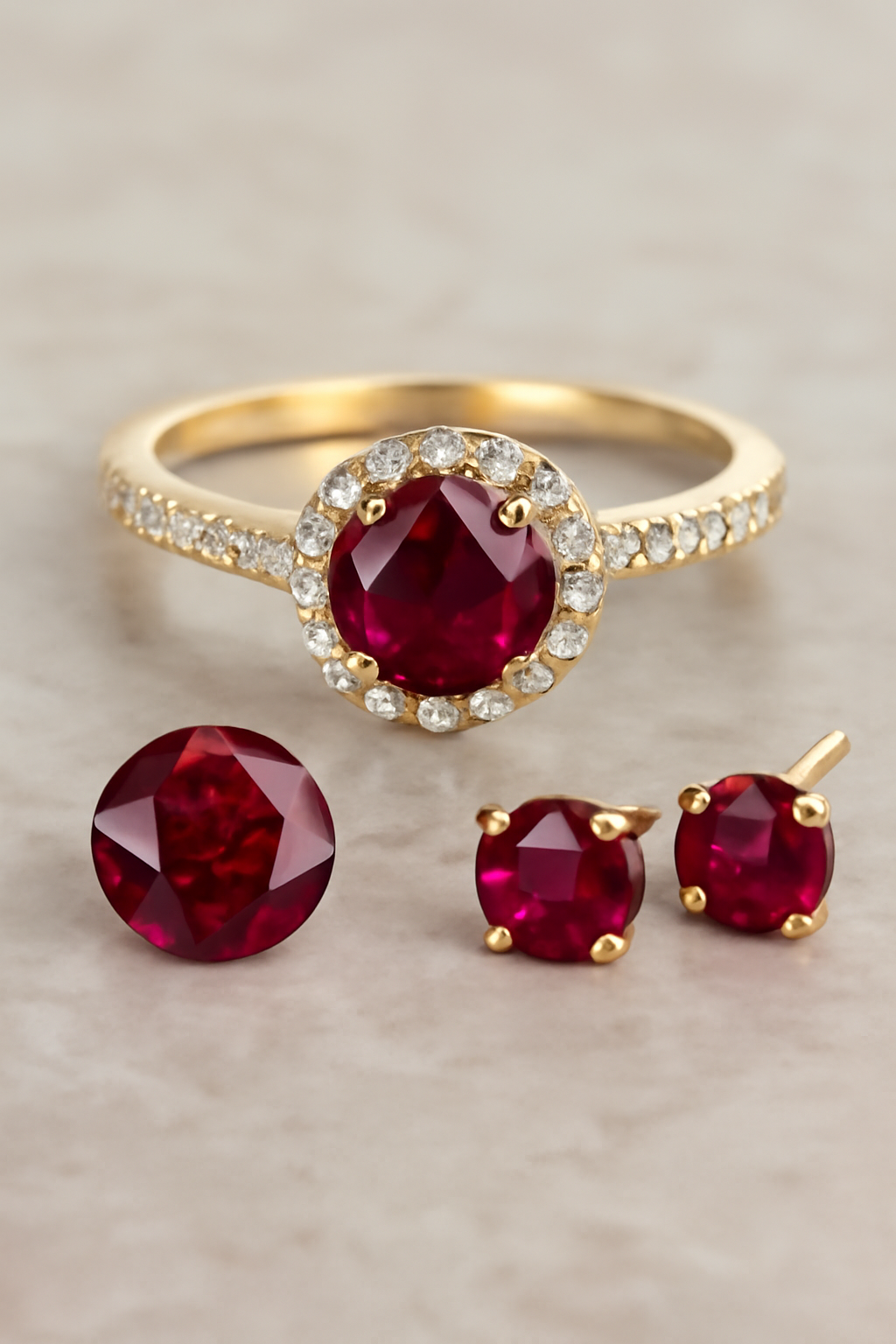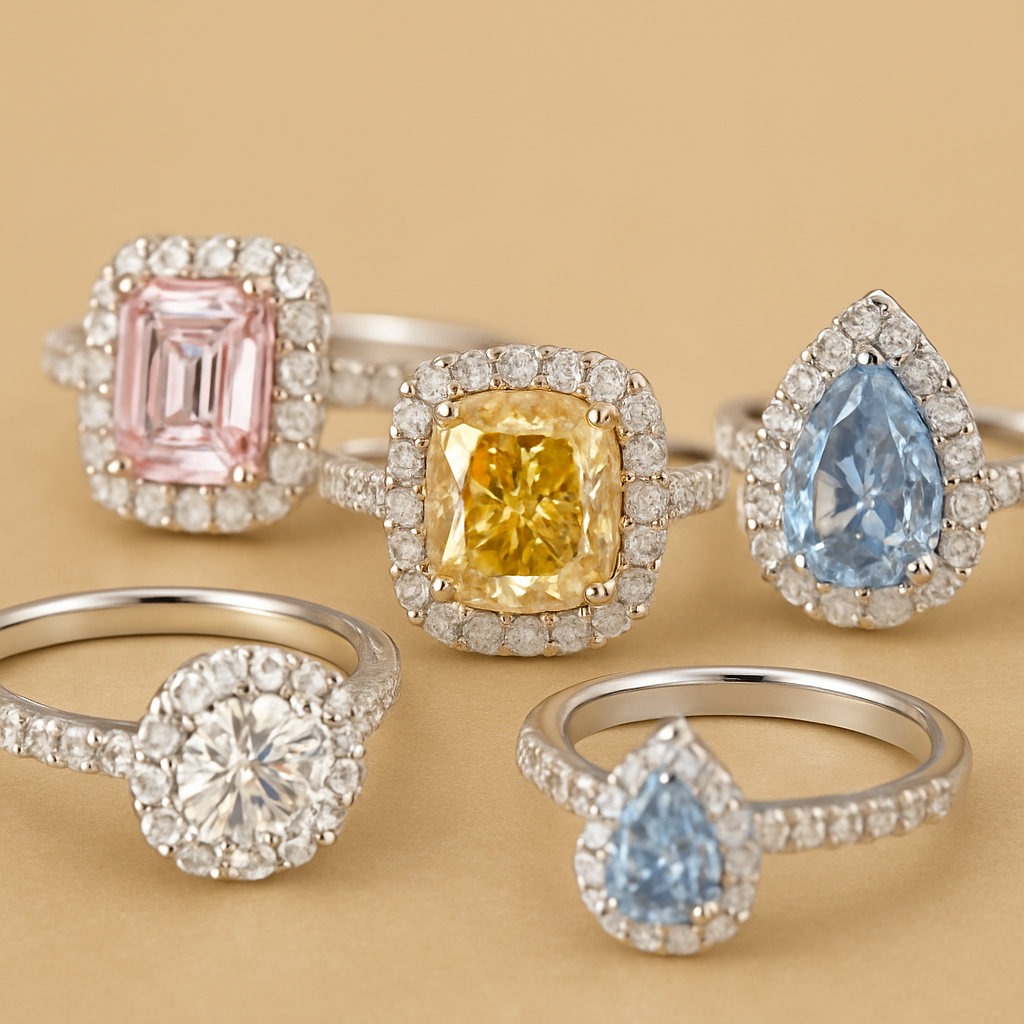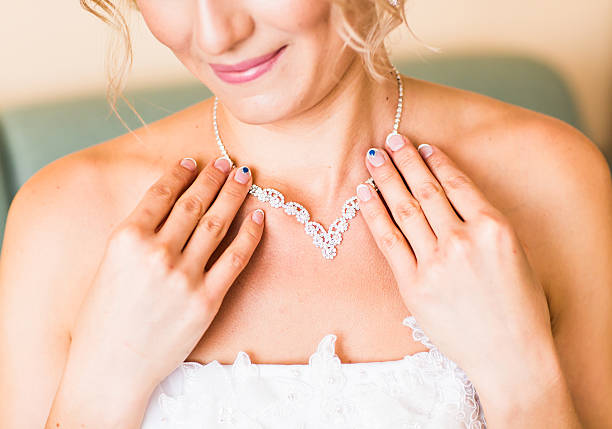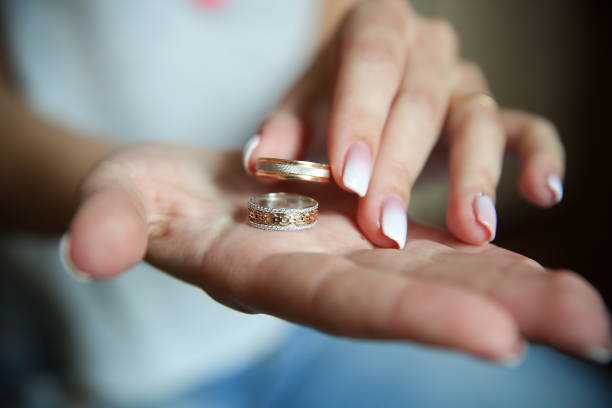With good reason, the ruby is referred to as the July birthstone; its vivid red hue, significance, and history make it one of the most prized gemstones in the world. Because of their rarity, durability, and breathtaking aesthetic appeal, rubies are highly valued in the gemstone industry. The ruby, which is frequently regarded as a gemstone of royalty, gets its gorgeous, fiery red color from chromium elements in the crystal structure. The ruby is a popular choice for engagement rings, anniversaries, and other life milestones because it symbolises strength, courage, and passion.
The Latin word "ruber," which means red, is where the word "ruby" originates. Rubies, which are second only to diamonds in hardness, are perfect for daily wear because of their strong durability and eye-catching beauty, which can be used to create rings, necklaces, earrings, and more.
Historical Significance of Rubies
Due to their mystical and symbolic qualities, rubies have been highly valued throughout history. Rubies were regarded as a sign of spiritual power and divine favour in ancient societies. Rubies were considered to grant invincibility in combat in Burmese culture. According to legend, soldiers added rubies to their skin to make sure they would be safe while fighting.
Ruby was regarded as one of the most valuable gemstones in the ancient Indian subcontinent. They were frequently placed in kings' and queens' crowns as a symbol of their authority and prestige. According to these royals, rubies possess magical qualities that could shield them from harm and bring them wealth.
Ruby was considered a lucky charm and a sign of good health for aristocrats and royalty. Their reputation as the gem of love was cemented when they were frequently presented as gifts to mark birthdays, weddings, and other important life events.
Symbolism Behind Ruby
Passion, love, and vitality are strongly associated with rubies. Their rich red color is frequently connected to the heart and blood, signifying the center of our emotional vitality. Let's examine the symbolism in more detail:
- Love and Passion: Because of their fiery red hue, which is connected to the depth of love, rubies are frequently referred to as the "king of gemstones." A ruby, which represents passion and devotion, is a common gemstone in engagement rings and is frequently given as a gift between lovers.
- Vitality and Energy: Rubies are thought to be a stimulating gemstone that is frequently connected to vigour, courage, and energy. They are believed to enliven the spirit, encourage a sense of strength, and energies the wearer. The energy of the ruby can encourage the wearer and give them the courage and resiliency to face life's obstacles.
- Good fortune and protection: Throughout history, rubies have been regarded as guardians against harm and evil spirits. While some cultures thought that wearing a ruby could ward off danger, others thought that it could draw success and good fortune. Additionally, rubies were used to ensure prosperity and ward off disease.
- Power and Success: Rubies are associated with both love and passion as well as success in both life and business. Rubies are popular among people seeking financial or professional success because they are linked to reaching objectives and realizing aspirations.
Ruby's Quality Factors

When purchasing a ruby, four main factors determine its quality and value. These are often referred to as the Four Cs: Color, Clarity, Cut, and Carat weight. Here's a detailed breakdown of these factors:
1. Color:
- The primary determinant of a ruby's value is its color. Deep, vivid "pigeon blood red" rubies—a rich, pure red with a hint of blue—are the best. Too-light or too-dark rubies might not have the vibrancy that buyers are looking for.
- Rubies can be pinkish, orange-red, or deep red, with the latter being the most costly and desirable. The hue, tone, and saturation of a ruby are used to determine its color.
2. Clarity:
- In contrast to diamonds, rubies frequently have inclusions known as "jardins"—the French word for "garden." By proving a ruby's natural origin, these inclusions can actually increase its value. But the clearer and more valuable the ruby, the fewer inclusions there are.
- Although rubies with fewer obvious inclusions are usually more costly, buyers who value the stone's distinctive natural characteristics are less concerned about inclusions.
3. Cut:
- Oval, round, emerald, and cushion shapes are among the various shapes that rubies can be cut into. The ruby's brilliance and light-reflecting properties are influenced by its cut. A well-cut ruby will exhibit the inherent brilliance of the stone and have good symmetry.
- Although some rubies (particularly larger ones) may be left in their cabochon form, which is a smooth, rounded shape, rubies are typically cut in the facet style.
4. Carat Weight:
- Carats are used to measure a ruby's size. Due to their rarity, larger rubies are more costly. However, a ruby's quality is not solely determined by its size. A smaller ruby with superior clarity and color might be worth more than a larger, lesser-quality ruby.
- Selecting a ruby that suits your style and price range requires striking a balance between size, color, and clarity.
Tap here to understanding the 4 Cs of Diamonds ->
How to Choose the Perfect Ruby Jewelry
Knowing what goes well with your own style is essential to selecting the ideal ruby jewelry. When making a purchase, take into account these important factors:
- Choosing a Metal: Rose gold, platinum, white gold, and yellow gold are the best metals for ruby jewelry. The fiery red color of the ruby is complemented by the warmth of gold, while platinum provides a sleeker, more contemporary appearance. The ruby's passionate color is enhanced by the distinctive, romantic feel of rose gold.
- Jewelry Types: A wide range of jewelry items, such as bracelets, earrings, pendants, rings, and brooches, can be set with rubies. Because of their romantic connotations, rubies are very popular for engagement rings. Whether set with a single ruby or encircled by diamonds, ruby necklaces or earrings can also make a striking statement.
- Combining with Other Gemstones: To accentuate their beauty, rubies are frequently combined with diamonds. The contrast between the brilliance of diamonds and the red color of rubies is remarkable. For a distinctive, multicolored design, rubies can also be combined with sapphires, emeralds, or other colored stones.
Famous Rubies

Several rubies throughout history have gained fame for their size, beauty, and value. Here are a few examples:
- For centuries, kings and queens have worn the 170-carat Black Prince's Ruby, which is a part of the British Crown Jewels. Although it is a spinel, despite its name, it is one of the most well-known rubies in the world due to its value and history.
- The Red Emperor Ruby: Known for its brilliant color and clarity, this 15.97 carat gemstone is one of the most well-known rubies on exhibit at the Smithsonian Institution.
- The Hope Ruby: Part of the Hope Collection, this stunning 15-carat ruby has a long and illustrious history with the Hope Diamond. It is regarded as one of the most well-known rubies in the world.
Ruby Care Tips
With a Mohs hardness of 9, rubies are long-lasting. But they require proper care, just like any other valuable gemstone:
- Routine Cleaning: Use a gentle cloth, warm water, and mild soap to clean rubies. Steer clear of harsh chemicals as they can harm the surface of the gemstone.
- Appropriate Storage: To avoid scratches, keep rubies apart from other gemstones. The best option is a jewelry box with a separate compartment or a soft pouch.
- Avoid Impact: Although rubies are resilient, they can still chip when subjected to severe force, so keep them away from drops and sharp objects.
Why Ruby Makes the Perfect July Birthday Gift
For people born in July, the ruby is a beautiful and significant gift. Rubies are known for their intense symbolism and fiery red hue. They stand for courage, love, and passion, all of which are important qualities for people born in this month.
A ruby ring, necklace, or bracelet—one of the most valuable gemstones—can be the ideal way to commemorate an anniversary, engagement, or birthday. An enduring heirloom that can be handed down through the generations is a ruby.
Conclusion
The official birthstone for July is the ruby, a gemstone with exceptional beauty, power, and meaning. A ruby will not let you down, whether you're looking for a beautiful addition to your own jewellery collection or a present for a special someone. It is a gemstone deserving of respect and love because of its vivid red hue, lengthy history, and classic appeal.
Discover the power of love, passion, and vitality with this magnificent stone by perusing our ruby jewelry collection today.







